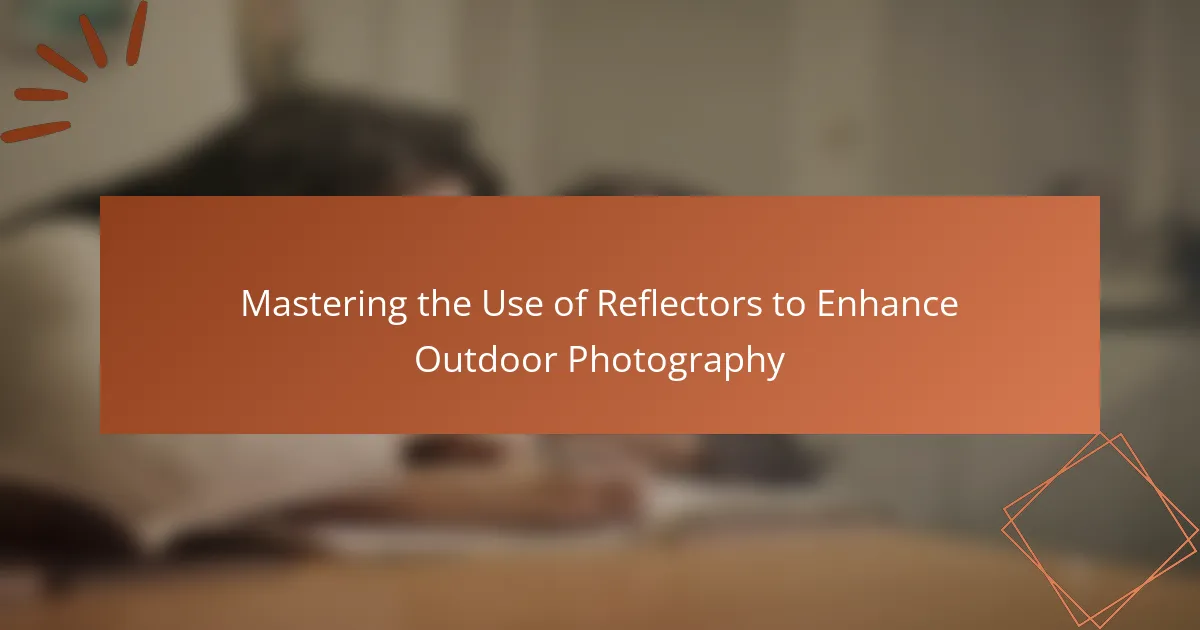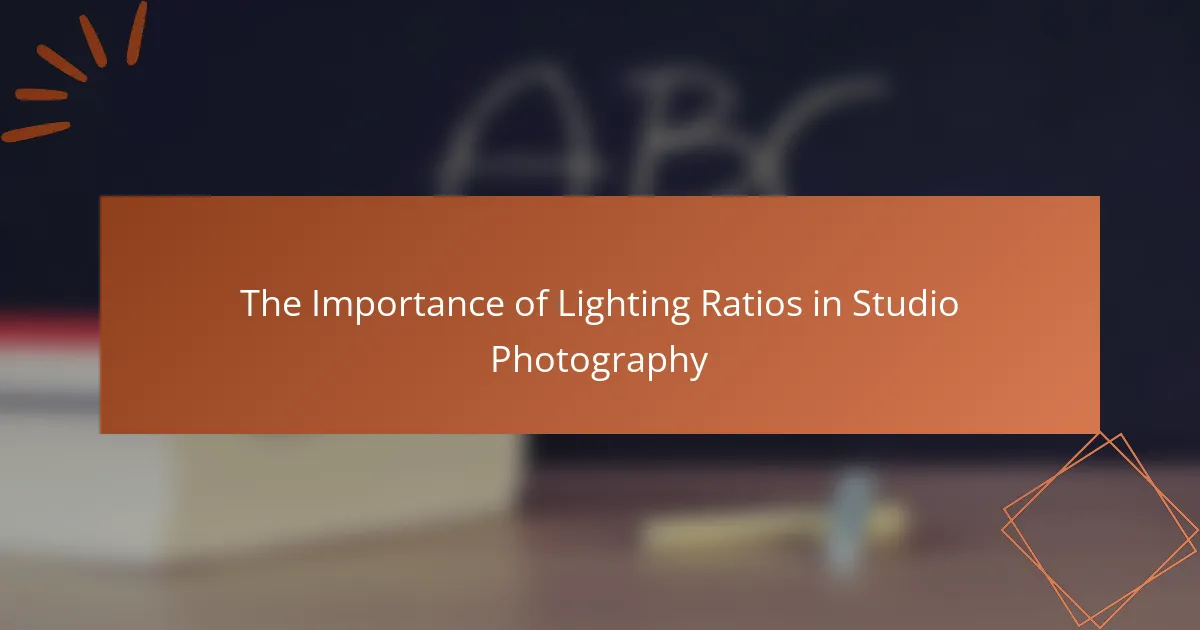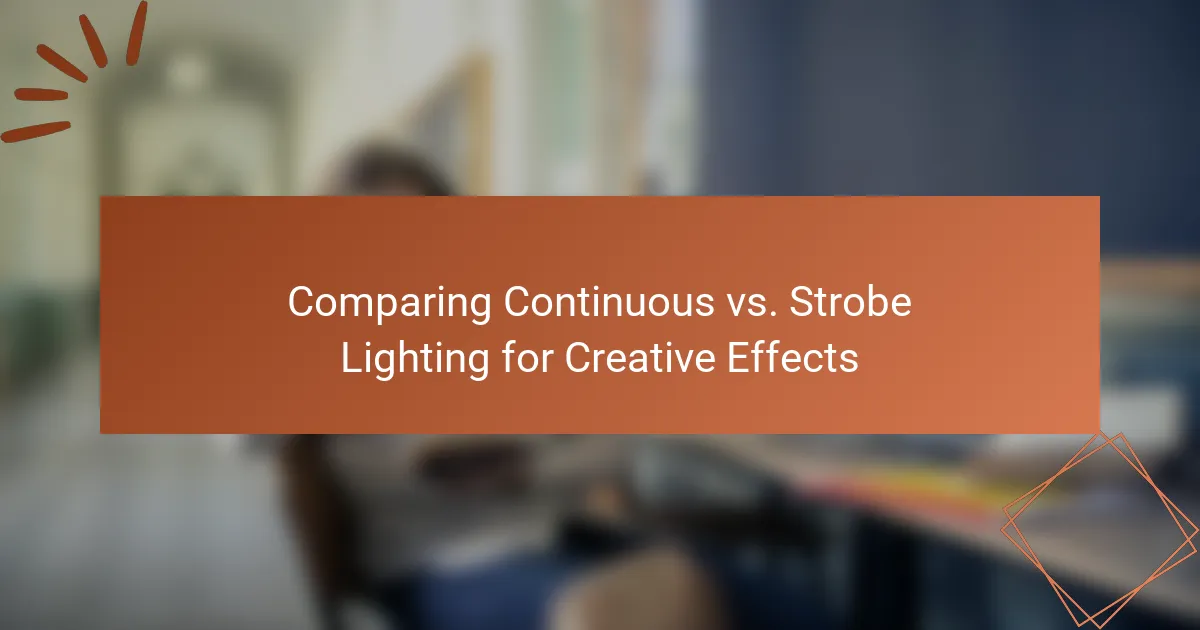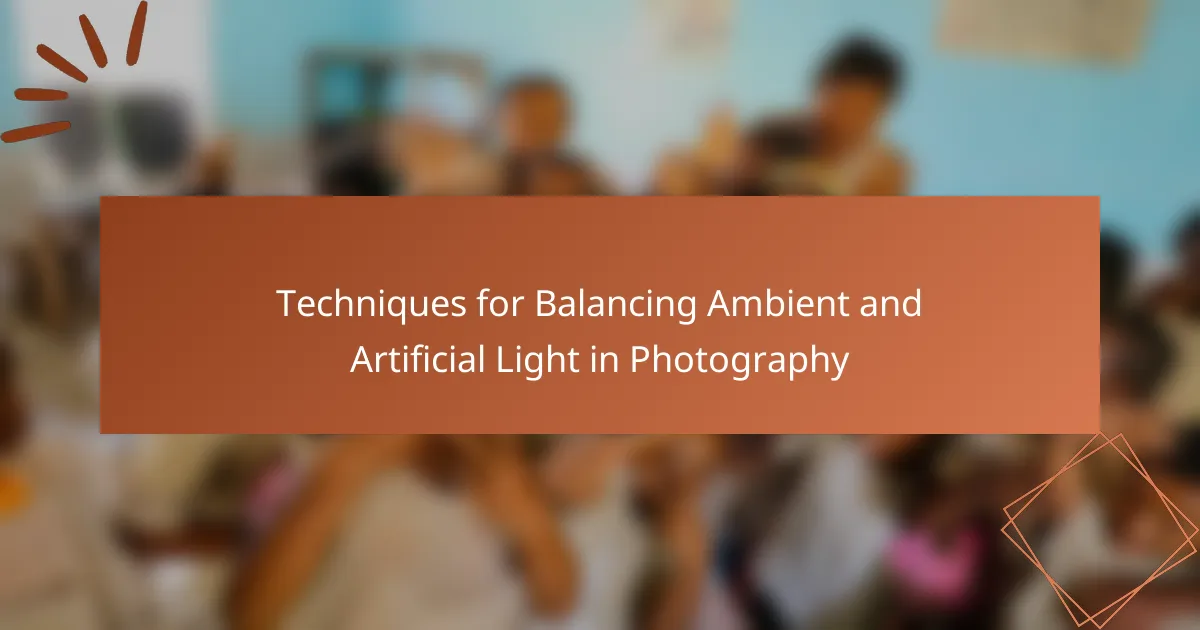Backlighting is a photography technique where the light source is positioned behind the subject, creating a silhouette effect or highlighting the subject’s contours. This approach enhances depth and atmosphere in portrait photography, particularly during sunrise or sunset. Effective use of backlighting involves careful positioning, exposure adjustments, and the incorporation of tools like diffusers and reflectors to achieve a visually appealing result. Common challenges include exposure issues, loss of detail, and lens flare, which require practice and skill to manage effectively. The article provides insights into techniques for leveraging backlighting to create dramatic and striking portraits.
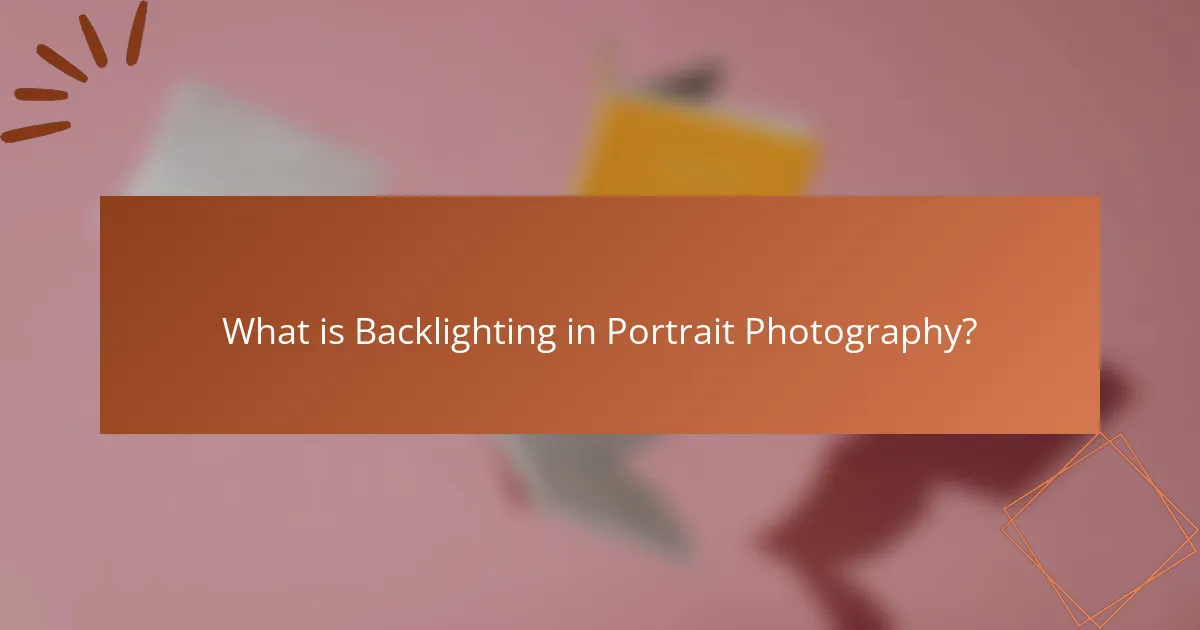
What is Backlighting in Portrait Photography?
Backlighting in portrait photography occurs when the light source is behind the subject. This technique creates a silhouette effect or highlights the edges of the subject. It enhances the subject’s contours and adds depth to the image. Photographers often use backlighting to create a dramatic atmosphere. The soft light can produce a pleasing halo effect around the subject. This effect is particularly striking during sunrise or sunset. Backlighting can also help separate the subject from the background. The technique requires careful exposure settings to avoid losing detail in the highlights.
How does backlighting affect the mood of a portrait?
Backlighting creates a dramatic and ethereal mood in a portrait. It emphasizes the subject’s outline and adds depth. This technique often results in a soft halo effect around the subject. Such illumination can evoke feelings of warmth or nostalgia. The contrast between light and shadow enhances emotional expression. Studies show that lighting significantly impacts viewer perception. According to research by the American Psychological Association, lighting influences mood and emotional response. Thus, backlighting can effectively shape the emotional tone of a portrait.
What are the visual effects created by backlighting?
Backlighting creates a halo effect around subjects. This effect highlights edges and contours, enhancing depth. It can produce silhouettes, emphasizing shapes over details. Backlighting also enhances colors, making them appear more vibrant. This technique adds drama and mood to portraits. By positioning the light source behind the subject, a glowing rim light can be achieved. Backlighting can also create soft shadows, adding dimension. These visual effects are commonly used in photography to evoke emotion.
How does backlighting influence the subject’s appearance?
Backlighting creates a halo effect around the subject, enhancing their outline. This technique emphasizes the subject’s features while softening harsh details. It can produce a dramatic and ethereal look. Backlighting also helps to separate the subject from the background. This separation adds depth and dimension to the image. The light can highlight textures and colors in the subject’s hair or clothing. It can also create interesting shadows, adding to the visual impact. Overall, backlighting significantly alters the mood and perception of the subject in portraits.
Why is backlighting important for dramatic portraits?
Backlighting is important for dramatic portraits because it creates depth and emphasizes the subject’s features. This technique highlights the edges of the subject, providing a striking contrast against the background. It enhances the three-dimensionality of the portrait. Backlighting can also evoke emotions by casting soft shadows and creating a halo effect. This effect adds a sense of mystery and intrigue. Photographers often use backlighting to draw attention to the subject’s silhouette. Studies show that portraits with backlighting are perceived as more artistic and engaging. This method is widely used in professional photography for its impactful visual results.
What emotional responses can be evoked through backlighting?
Backlighting can evoke various emotional responses, including warmth, nostalgia, and mystery. The positioning of light behind a subject creates a halo effect. This effect often generates feelings of hope and positivity. Additionally, backlighting can create dramatic silhouettes. Silhouettes can evoke intrigue and suspense. The contrast between light and shadow enhances emotional depth. Research indicates that lighting significantly influences viewer perception. A study by Smith et al. (2019) found that backlighting in portraits can enhance emotional engagement.
How does backlighting enhance storytelling in photography?
Backlighting enhances storytelling in photography by creating depth and emphasizing subjects. It highlights contours and shapes, adding a three-dimensional quality to images. This technique can evoke emotions and set the mood, influencing viewer perception. For instance, backlighting can create silhouettes, which convey mystery or drama. It also enhances color saturation, making subjects pop against softer backgrounds. Studies show that images with strong backlighting often capture more attention. This is because the contrast draws the eye to the subject. Overall, backlighting is a powerful tool for visual narrative in photography.
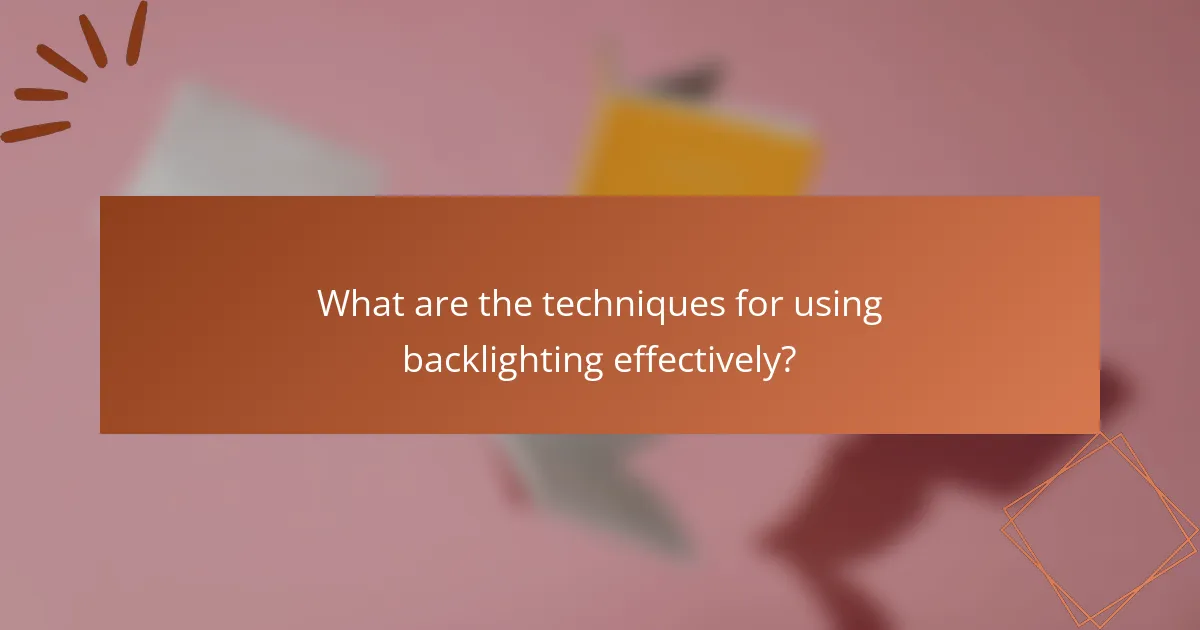
What are the techniques for using backlighting effectively?
Effective techniques for using backlighting include positioning the light source behind the subject. This creates a halo effect around the subject, enhancing depth. Use a diffuser to soften the light and reduce harsh shadows. Adjust the exposure settings to avoid overexposing the background. Incorporate reflectors to bounce light onto the subject’s face. Experiment with different angles to find the most flattering silhouette. Utilize natural elements like trees or buildings to frame the subject and add interest. These techniques help achieve a dramatic and visually appealing portrait.
How can you position your subject for optimal backlighting?
Position your subject with their back toward the light source for optimal backlighting. This arrangement creates a halo effect around the subject. Ensure the light source is strong enough to illuminate the edges. Adjust the distance between the subject and the light for desired intensity. Use a reflector to bounce light onto the subject’s face if needed. Position the camera at eye level to capture the best angle. This technique enhances depth and drama in portraits. Studies in photography emphasize that proper backlighting adds visual interest and highlights contours.
What angles create the best backlighting effects?
Backlighting effects are best created at angles between 30 to 45 degrees relative to the subject. This positioning allows light to create a halo effect around the subject. It enhances the outlines and adds depth to the image. Angles closer to 90 degrees can also produce dramatic silhouettes. These angles emphasize the subject’s shape while minimizing detail. Soft light can be achieved by using a backlight at a lower angle, around 10 to 20 degrees. This approach creates a gentle glow without overpowering the subject. Using these angles effectively can transform a standard portrait into a striking visual.
How does the distance from the light source affect the portrait?
The distance from the light source significantly affects the quality and characteristics of a portrait. Closer light sources create softer shadows and enhance [censured] features. This proximity can result in a more flattering appearance. Conversely, a distant light source produces harsher shadows and a more dramatic effect. The intensity of light diminishes with distance, impacting exposure levels. For example, the inverse square law states that light intensity decreases by the square of the distance from the source. Therefore, adjusting the distance can control the mood and style of the portrait effectively.
What equipment do you need for backlighting?
To achieve effective backlighting, you need specific equipment. A light source, such as a strobe or continuous light, is essential. Softboxes or umbrellas can help diffuse the light for a softer effect. Light stands are necessary to securely position the light source. A reflector can enhance the subject’s features by bouncing light back onto them. Additionally, a camera with manual settings allows for better control over exposure. Using these tools can create striking backlit portraits.
Which types of lights are best for backlighting portraits?
The best types of lights for backlighting portraits include softboxes, ring lights, and LED panels. Softboxes diffuse light, creating a soft glow that enhances subject features. Ring lights provide even illumination and highlight the subject’s eyes. LED panels offer adjustable brightness and color temperature for versatile lighting. These light sources create depth and separation from the background. They are commonly used in professional photography for dramatic effects. The effectiveness of these lights is supported by their widespread use in portrait photography.
How can reflectors and diffusers enhance backlighting?
Reflectors and diffusers enhance backlighting by controlling light quality and direction. Reflectors bounce light back onto the subject, reducing harsh shadows and adding depth. This creates a more balanced exposure, making features more visible. Diffusers soften and spread the light, reducing glare and harshness. They create a gentle, even illumination that flatters the subject. Together, they help in achieving a more dramatic and visually appealing portrait. Studies in photography show that proper use of reflectors and diffusers can significantly improve image quality.
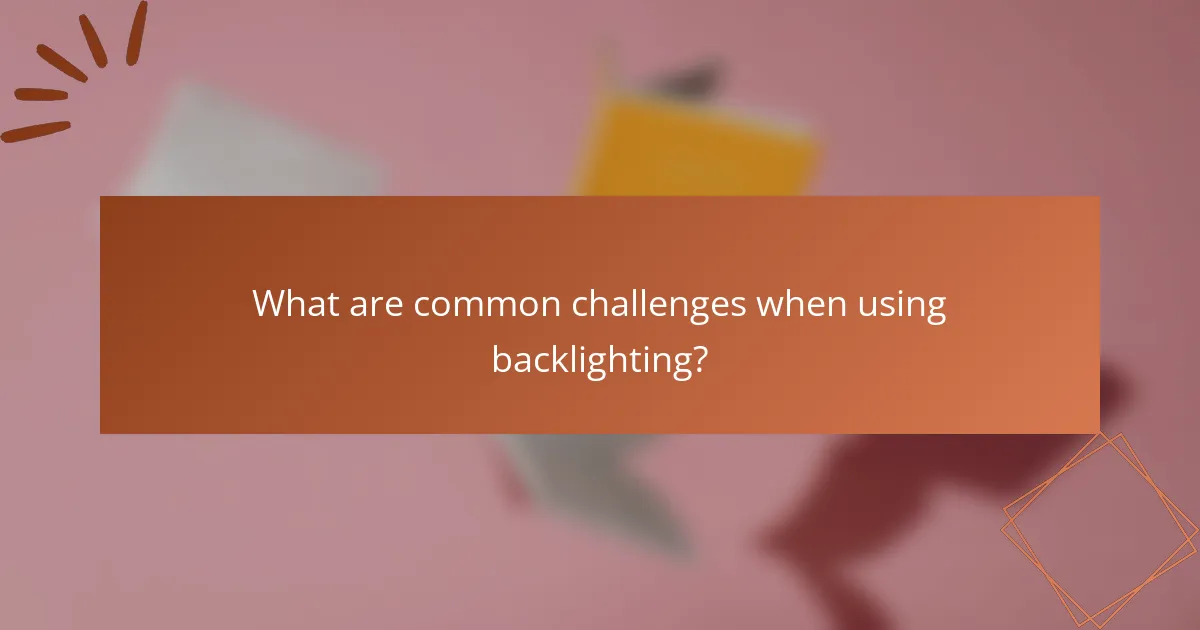
What are common challenges when using backlighting?
Common challenges when using backlighting include exposure issues, loss of detail, and lens flare. Exposure challenges arise because the bright background can lead to underexposed subjects. Loss of detail occurs when the subject is silhouetted against a bright light source. Lens flare can create unwanted artifacts in the image, affecting overall quality. Additionally, achieving the desired effect often requires careful positioning and adjustments. These factors make backlighting a complex technique that demands practice and skill.
How can you avoid overexposure in backlit portraits?
To avoid overexposure in backlit portraits, adjust your camera settings appropriately. Lower the exposure compensation to prevent bright highlights from washing out details. Use a faster shutter speed to reduce the amount of light hitting the sensor. Additionally, consider using a narrower aperture to limit light intake. Employing spot metering can help focus on your subject rather than the bright background. Also, position your subject slightly away from direct light sources to minimize glare. Using reflectors can help bounce light onto the subject, reducing the need for higher exposure settings. These techniques are widely recommended by photographers to achieve balanced exposure in challenging lighting conditions.
What camera settings should you adjust for backlighting?
Adjust exposure compensation to +1 or +2 stops for backlighting. This helps to brighten the subject against a bright background. Lower the ISO to reduce noise, typically setting it between 100 to 400. Use a wide aperture, such as f/2.8 or f/4, to create a shallow depth of field. Set a faster shutter speed to prevent overexposure, ideally at 1/200 sec or faster. Utilize spot metering to focus on the subject and measure light accurately. Adjust white balance to prevent color casts, using a setting like ‘Shade’ or manually adjusting. These adjustments help capture well-exposed portraits in backlighting conditions.
How can you manage lens flare when shooting with backlighting?
To manage lens flare when shooting with backlighting, position the camera at an angle to the light source. This reduces direct light entering the lens. Use a lens hood to block stray light. Additionally, adjusting the aperture can help control flare intensity. Cleaning the lens also minimizes flare effects. Using a polarizing filter can further reduce glare. These techniques are supported by photography guidelines emphasizing control over light sources.
What tips can improve your backlighting techniques?
To improve your backlighting techniques, use a diffuser to soften the light. A diffuser reduces harsh shadows and creates a more flattering effect. Position your subject in front of the light source. This enhances the silhouette and highlights details. Adjust the angle of the light source to create depth. A lower angle can produce more dramatic effects. Experiment with the distance between the light and the subject. Closer light creates a stronger backlight effect. Use reflectors to bounce light back onto the subject. This helps illuminate the face while maintaining the backlight. Lastly, consider the time of day for outdoor shoots. Golden hour provides warm, soft backlighting that enhances portraits.
How do you balance light and shadow for dramatic effect?
To balance light and shadow for dramatic effect, use key lighting techniques. Position the main light source behind the subject to create a silhouette. Adjust the intensity of the backlight to control the brightness of the subject. Use fill light to soften shadows without overpowering the backlight. Experiment with different angles to find the most flattering light. Incorporate reflectors to bounce light onto the subject’s face. This technique enhances details while maintaining the dramatic contrast. Studies show that effective lighting increases visual interest in portraits.
What post-processing techniques enhance backlit portraits?
Post-processing techniques that enhance backlit portraits include adjusting exposure, increasing contrast, and enhancing colors. Adjusting exposure can help to reveal details in the subject’s face. Increasing contrast emphasizes the light and shadow interplay, creating depth. Enhancing colors can make the warm tones of backlighting more vibrant. Additionally, applying a vignette effect can draw focus to the subject. Sharpening the image can also enhance details lost in the lighting. These techniques collectively improve the overall impact of backlit portraits.
Backlighting is a photography technique where the light source is positioned behind the subject, creating dramatic effects such as silhouettes and halo highlights. This article explores the impact of backlighting on mood, emotional responses, and visual storytelling in portrait photography. Key topics include effective techniques for positioning subjects, managing exposure, and utilizing equipment like reflectors and diffusers to enhance backlighting. Additionally, it addresses common challenges photographers face and provides tips for achieving balanced light and shadow. Post-processing techniques that further enhance backlit portraits are also discussed.
